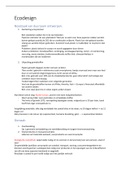Samenvatting
Building brands for impact required readings summary
This is a summary of almost all the articles from building brands for impact. The only missing articles are: Lecture 3 reading 1 Lecture 6 reading 2 Lecture 7 reading 1 Lecture 7 reading 4
[Meer zien]













